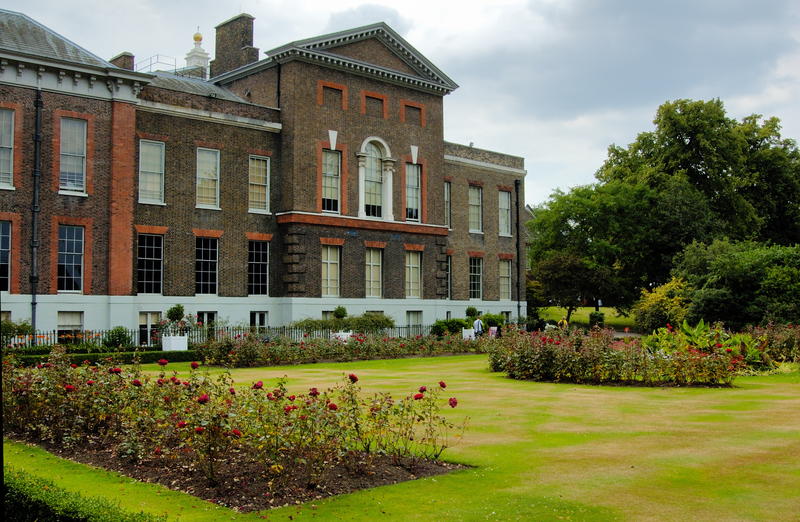Laying the Roots: 9 Beginner Tips for a Successful Gardening Adventure
Posted on 14/09/2025
Laying the Roots: 9 Beginner Tips for a Successful Gardening Adventure
Embarking on your first gardening journey can be both exciting and a little overwhelming. But with the right guidance, anyone can grow a thriving, beautiful garden. In this comprehensive guide, discover nine essential tips that will help you set deep roots for your new hobby and ensure success in your gardening adventures. Whether you're looking to grow luscious vegetables, vibrant flowers, or calming green herbs, these strategies will get your hands dirty--and your garden flourishing!
Why Start Your Gardening Journey?
Before diving into our beginner gardening tips, it's important to understand why gardening is a fulfilling and rewarding pursuit. Gardening offers physical, mental, and emotional benefits: it connects you with nature, provides fresh produce, and can be a relaxing escape from technology. By laying a strong foundation, you're not only nurturing plants--you're nurturing your well-being, too.

1. Choose the Right Garden Location
Success in gardening starts with location. Where you lay your roots--literally--can determine how well your plants grow. Consider these location factors:
- Sunlight: Most vegetables and flowers need at least 6 hours of direct sunlight. Observe your yard or balcony throughout the day to find the sunniest spot.
- Soil Drainage: Avoid waterlogged areas, as standing water can rot roots. Well-draining soil is the key to healthy plants.
- Accessibility: Choose a place where you can easily water, weed, and maintain your garden.
Tip: For urban gardeners, containers and raised beds are excellent for small spaces and ensure better control over soil quality and drainage.
2. Get to Know Your Soil
The foundation of a fruitful gardening adventure is healthy soil. Investing time in understanding your soil type--clay, sandy, silty, peaty, chalky, or loamy--is crucial. Each type has its characteristics that affect plant growth:
- Clay: Heavy but rich in nutrients; tends to hold water.
- Sandy: Drains quickly; may need more frequent watering and fertilizing.
- Loamy: The gold standard--balances drainage and nutrients!
Test your soil's pH and texture using a simple kit from a garden center. Once you know your soil, you can amend it for better results. Add organic matter such as compost, manure, or peat moss to improve fertility and structure.
3. Select the Right Plants for Your Climate
One of the most common beginner gardening mistakes is planting varieties that don't suit the local weather or growing conditions. Always choose plants that thrive in your climate zone. To do this:
- Consult the USDA Hardiness Zone Map or your country's equivalent.
- Ask local nurseries or gardening clubs for recommendations.
- Start with easy-to-grow varieties like lettuce, marigolds, or cherry tomatoes if you're just beginning your planting adventure.
Native plants are often the lowest-maintenance choice, as they evolved for your local soil, rainfall, and temperature range. They also support beneficial insects, birds, and pollinators.
4. Plan Your Garden Layout
A thoughtful garden design sets your project on the right path. Sketch out a simple plan of your gardening space before digging in the dirt:
- Arrange taller plants (like sunflowers or corn) to the north or west so they won't shade shorter ones.
- Group plants by water and sunlight needs. This arrangement makes watering easier and helps avoid over or under-watering.
- Consider companion planting (putting certain vegetables or flowers side-by-side to boost each other's growth and deter pests).
Keeping a gardening journal can help you track what works best in your space and plan improvements for each season.
5. Start Small and Expand Gradually
As exciting as a large garden may seem, starting small is one of the best tips for beginner gardeners. A modest plot or a handful of containers allows you to:
- Learn the basics of sowing, watering, and plant care without feeling overwhelmed.
- Focus on a handful of varieties and develop key gardening skills.
- Expand over time as your confidence and expertise grow.
Remember: It's better to succeed with a few plants than struggle with too many!
Growing a Windowsill or Balcony Garden
If space is at a premium, herbs, salad greens, and cherry tomatoes can flourish in pots on a sunny windowsill or small balcony. This micro-gardening approach is perfect for those with bustling city lifestyles.
6. Master the Art of Watering
Proper watering is a cornerstone of any successful gardening adventure. Too much or too little moisture can dramatically impact your plants' health:
- Water deeply but less frequently to encourage strong root development.
- Water early in the morning or late in the afternoon to minimize evaporation.
- Avoid wetting the leaves, as this can promote mold and disease--focus on the soil around the base.
Tip: Invest in a simple rain gauge or soil moisture meter to track how much water your garden receives naturally and supplement when needed.
7. Feed and Mulch for Healthy Growth
Healthy soil means healthy plants. Regularly enrich your soil with organic fertilizers or compost to provide essential nutrients. Mulching--a layer of straw, bark, or compost on the soil--offers several benefits:
- Suppresses weeds by blocking sunlight.
- Retains soil moisture.
- Moderates soil temperature and protects roots against extreme weather.
- Slowly breaks down to release nutrients as it decomposes.
Organic mulches are especially beneficial for beginner gardeners due to their ease of use and long-term soil enhancement.
8. Stay Vigilant Against Pests and Diseases
Even the most experienced gardeners face pests and plant diseases. The secret is early detection and prevention. To keep your garden adventure thriving:
- Inspect plants regularly for holes, spots, or unusual growth.
- Encourage beneficial insects like ladybugs and lacewings, which naturally control aphids and other pests.
- Use organic solutions such as insecticidal soaps or neem oil.
- Practice crop rotation to avoid soil-borne diseases.
Healthy, stress-free plants are less likely to succumb to pests and ailments--so focus on robust soil, proper watering, and good hygiene.
9. Learn, Enjoy, and Grow Along the Way
Your gardening adventure is an ongoing journey of discovery. Mistakes are inevitable, but every season offers new lessons. To maximize success in your garden adventure:
- Connect with local gardeners or clubs for hands-on advice and inspiration.
- Read trusted gardening books, blogs, or watch instructional videos.
- Experiment with different plants, techniques, and layouts.
- Celebrate small victories and don't sweat the failures; each experience is a step toward mastery.
Remember: The most important roots are the ones you lay in your own heart - nurturing patience, curiosity, and resilience.

Additional Beginner Gardening Tips for Long-Term Success
- Label your plants. This saves confusion, especially as sprouts often look alike.
- Keep tools clean and organized. Sharp, clean tools make gardening easier and prevent disease spread.
- Track your progress. Maintain a garden journal with notes on weather, harvest dates, and lessons learned.
Conclusion: Start Laying Your Roots Today!
Every expert gardener was once a beginner, taking their first tentative steps in the soil. With these beginner gardening tips, you're well on your way to a rich, rewarding garden adventure. Laying strong roots--both literally and metaphorically--ensures that you, and your garden, will not only survive but thrive for years to come.
Get outside, dig in, and let your gardening story bloom!

